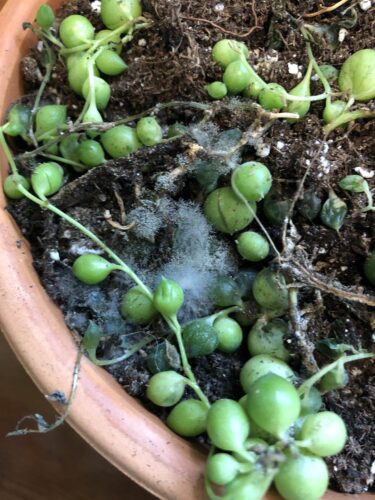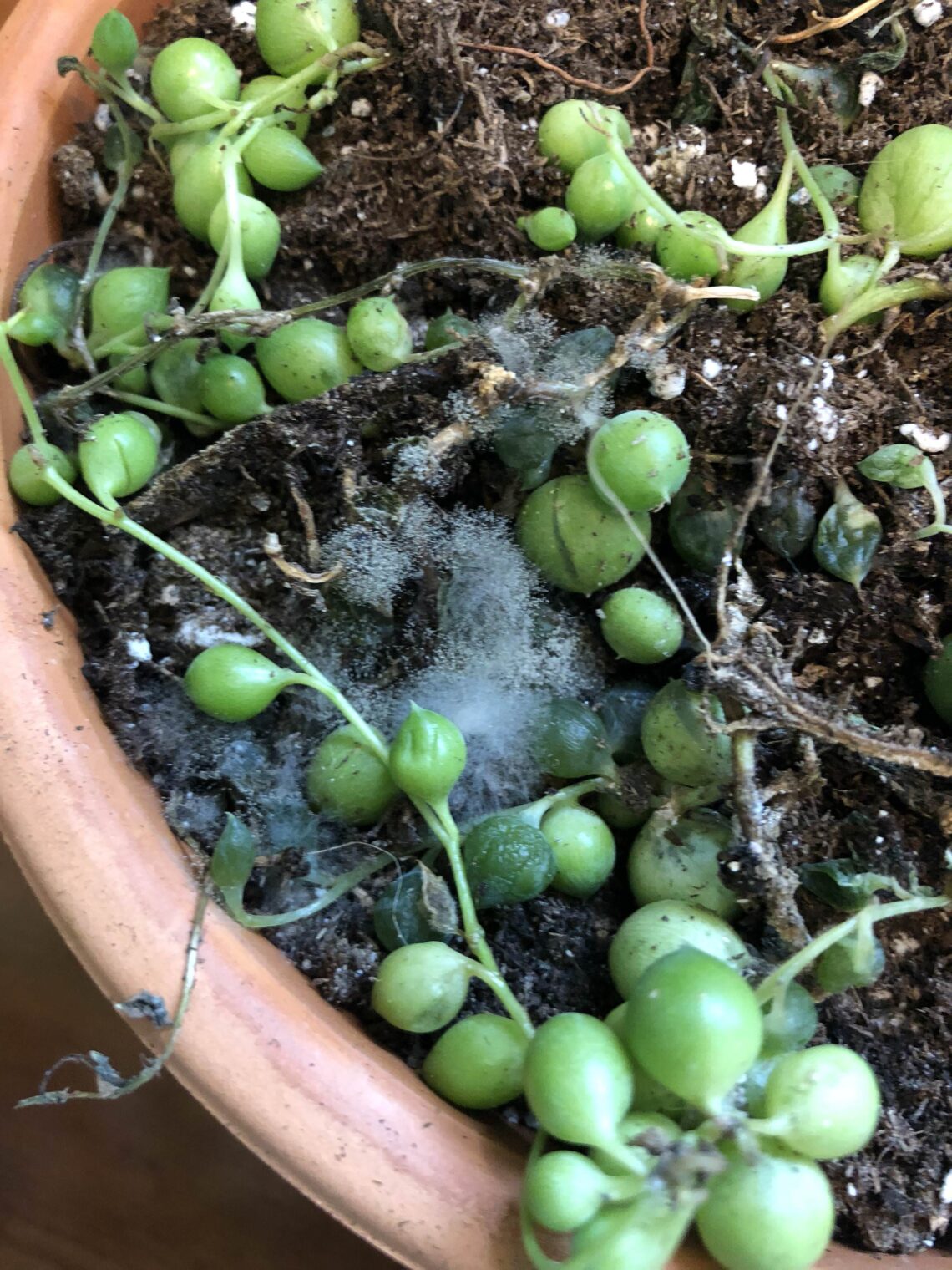Molds on String of Pearls plant is a nightmare for succulent lovers. Here are some best tips to identify the condition and cure it asap!
Molds are microscopic fungi that breed on damp and unclean surfaces. Houseplants are commonly affected by molds for their adaptation to the indoor environment. If your Senecio rowleyanus is suffering from one, then here’s how to get rid of String of Pearls Plant Molds!
How to Identify Molds on String of Pearls Plant?

White Mold: It is easy to spot, thanks to its color! You will notice a cotton-like growth on the stems or leaves. This one is usually harmless, but it’s always good to get rid of it on time.
Grey Mold: This mold looks like a grey powder, and you can spot it near the roots or the base stem of the plant. It is dangerous and may kill the plant if left untreated.
Black Sooty Mold: It carries a sooty or gooey texture and is black or deep grey in color. It appears mostly at the base stem or base growing medium. Treat it in time to save the plant from issues.
Reasons Behind the Molds on String of Pearls
The string of pearl’s plant molds is a common condition in moist and low-temperature zones. These are the possible reasons behind this hostile fungus infestation.
- Overwatering
- Poor drainage
- Low air circulation
- Absence of bright light
- Overfertilization
- Dead leaves on the soil surface
How to Cure String of Pearls Plant Molds?
1. Control Overwatering
The String of Pearls plant, like any other succulent, has the ability to store water in its leaves and can pretty much battle drought with ease. If you will water the plant more than required, then it will attract mold.
Cut down on the water supply of your string of pearls. Water only when the top two inches feel dry to touch. This way you can keep the mold infestation in check.
2. Move to a Well-Lit Location
Succulents need plenty of sunlight both indoors and outdoors. Lack of sunlight breeds mold, which can be fatal to your string of pearls.
Move your plant to a location where it receives 4-5 hours of direct sunlight. Microbes do not spread in sunlight hence ridding the plant of molds.
3. Re-pot & Snip Away Affected Parts
Consider repotting the plant if the mold infestation is too much. Clean the root ball, snip away the damaged parts of the roots, stems, and leaves.
Transplant the plant in a new pot with a fresh growing medium, preferably a potting mix designed specifically for cacti or succulents.
4. Remove Decaying Matter from the Soil Surface
Molds feed on dead and decaying matter. Therefore, the fungus is more likely to settle on the soil surface with dead leaves or plant debris.
Clean any dead or decaying matter from the soil surface and keep aerating the top layer to allow more space for the soil to breathe.
5. Baking Powder and Soap Solution
Add half a teaspoon of baking soda with 4-5 drops of dish soap in a liter of water, stir well, and wipe the affected leaves with a piece of cloth dipped in the solution.
It is better to refrain from spraying the solution on the plant as the droplets might settle and make the plant susceptible to diseases.
6. Neem oil
Combine half a teaspoon of neem oil with 4-5 drops of dishwasher liquid in a liter of water, and add the solution to a spray bottle. Shake well and use it as a foliar spray to kill the molds on your string of pearls.
Neem oil is scientifically proven to be effective against sooty molds, mildew, fungus gnats, and many other fatal organisms.



